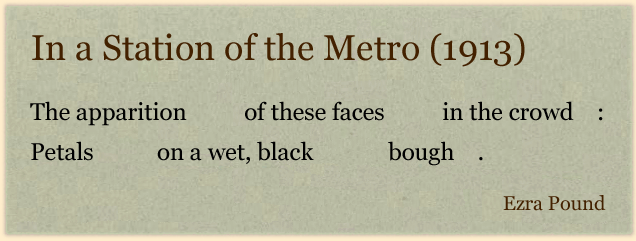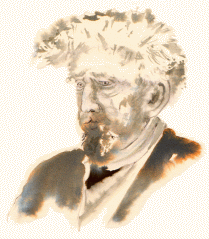For Westerners, real introduction to Japanese art, literature and culture began only when Japan ended its isolation in the 1850s, and a vogue of Japonisme followed. But the Japanese aesthetic hardly manifested itself in English poetry until 1915 when Japanese haiku inspired the Imagists to state these "common principles" they would apply in their poetry:
- using the language of common speech
- paying attention to rhythm as an expression of mood
- choosing content freely
- allowing images to speak for themselves, not "telling"
- producing poetry that is hard and clear, not imprecise
- seeking maximum compression without abusing the idiom of natural English
Ezra Pound proposed a technique he called "superposition" – setting images side by side so that they stayed independent whilst at the same time evoking fresh insights into each other. His famous example of "superposition" is:

|
| | |
|
| “ |
Poetry is concentration. | „ | |
|
Ezra Pound
|
| |
| | |
|
|
 |
|
